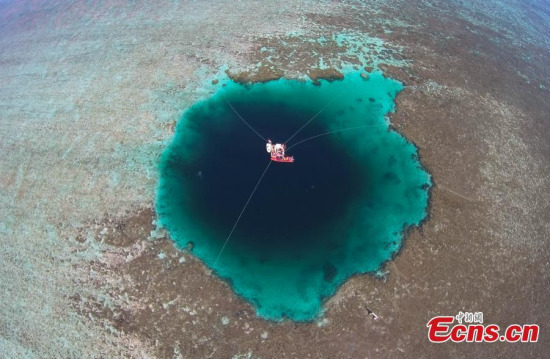
A view of the newly named Sansha Yongle Blue Hole in Xisha Islands in Sansha City, South China’s Hainan Province, July 24, 2016. (Photo: China News Service/Luo Yunfei)
China's Sansha city has decided to allocate 5 million yuan (about 748,000 U.S. dollars) annually for maritime environmental conservation in the next three years.
A first round of special environmental funding worth one million yuan was earmarked Saturday for exploration of the newly confirmed world's deepest underwater sinkhole, or blue hole, in the Xisha Islands. The blue hole in Yongle, a major coral reef, is 300.89 meters deep. It is known as Longdong, or "Dragon Hole."
The funds will be used to support scientific research and development of new methods and equipment in environmental protection, said Shi Guoning, a senior official of the land resources and environmental protection bureau of Sansha City.
Over the past four years, Sansha city has invested more than 30 million yuan in treatment and restoration of reefs and islets, according to the bureau.
The city has organized breeding and release of fish and sea turtles into the sea six times and cracked down on illegal capture of seabirds, according to Xu Zhifei, vice mayor of Sansha.
Sansha City was officially established in 2012 to administer the Xisha, Zhongsha and Nansha island groups and their surrounding waters in the South China Sea.


















































